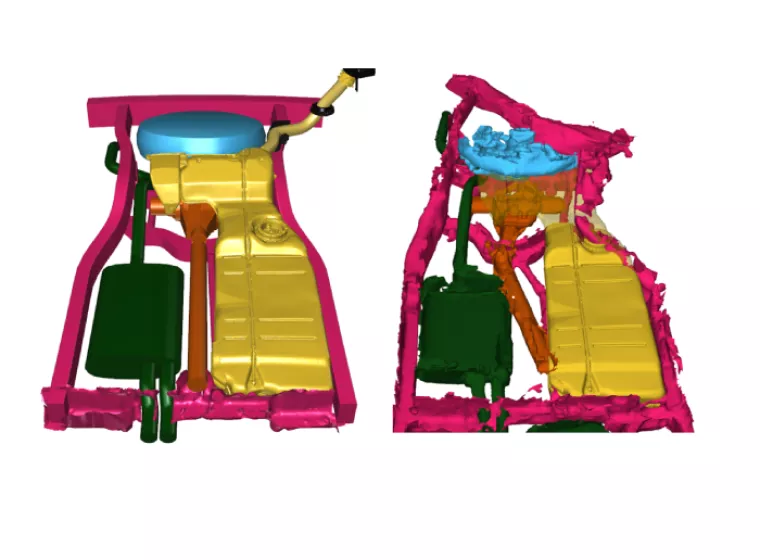November 10, 2022
Reflections on a timeless material as the United Nation's International Year of Glass comes to a close
Coinciding with unprecedented advances in glass science and their impact on current and emergent technologies — and the consensus among many glass scientists that the Glass Age has officially arrived — the United Nations General Council designated 2022 the International Year of Glass, stating "The Year will celebrate the essential role glass has in Society."
While we may be nearing the end of the year, we're in no way nearing the end of the Glass Age we're now living in.
Living in the Glass Age
Historians use the terms Stone Age, Bronze Age, and Iron Age to define epochs for revolutionary materials. Despite the shift toward a digital world, materials remain the foundation of new technologies. Among the different materials shaping our technology, society, and culture today, glass offers unparalleled versatility. However, its importance often goes unseen — perhaps because we typically look through glass rather than at it. Indeed, glass touches multiple aspects of our lives, from phones, tablets, computers, and televisions to automobiles and buildings.
Looking back
The first glass made by humans dates back around 5,000 years; over millennia, glass has radically transformed how we see ourselves and interact with the world around us, but technical advancements in glass continue their rapid expansion.
The history of glass contains countless problems solved and challenges overcome, but the future of glass technology is even more exciting.
A 2016 article in the International Journal of Applied Glass Science titled "Welcome to the Glass Age" explained how advancements in glass technology have accelerated dramatically. In the past 10 years alone, they wrote, "glass scientists have unleashed capabilities that we could not have imagined a short time ago." Some of these capabilities include:
- Chemically strengthened glass that can withstand the impact of a baseball travelling at more than 100 km/h.
- Flexible glass, thinner than a dollar bill.
- Antimicrobial glass that suppresses the growth of mold, mildew, fungi, and bacteria.
- Inert glass materials, converted from hazardous nuclear wastes to safely immobilize them for thousands of years.
- Bioactive glasses that can heal flesh wounds by stimulating the body's natural defenses.
For decades, glass innovations have fostered cultural and scientific advancements in industries such as global communications, health care, construction, and energy.

A sustainable future
The history of glass contains countless problems solved and challenges overcome, but the future of glass technology is even more exciting.The UN General Council's approval to declare 2022 the International Year of Glass stems from the significance of glass in promoting the UN's 2030 Sustainable Development Goals. Glass is infinitely recyclable, and melting and homogenizing cullet (i.e., waste glass) requires considerably less energy and results in lower carbon dioxide emissions than melting raw batch materials.
Advancements in glass are also improving the energy efficiency of homes and buildings, while enhancing comfort and beauty. From insulating windows to glass fiber insulation, these important architectural components can drive down the energy consumption of our built environment.
Keeping glass cutting-edge
In this era of accelerating glass applications, it's more important than ever that we understand, analyze, and optimize the performance and reliability of glass — and strive to realize its full potential and readiness for new uses and product improvements. While glass does come with some stand-alone characteristics compared to metals, polymers, and ceramics, glass systems can fail, too. Understanding and reducing performance degradation and the failure of glass are particularly important due to its brittle nature and the safety aspects of its many applications. Knowing the limits of glass performance and the root cause of underperformance or failure are likewise critical to developing new glass-containing products, performing safety testing, managing the risk associated with existing products, and dispute resolution when glass fails.
What Can We Help You Solve?
Exponent's materials scientists and engineers help clients answers their most vexing challenges involving glass, leveraging our multidisciplinary capabilities, such as research into glass chemistry, environmental conditions, mechanical stresses, and other application-specific factors. Our methodical scientific approach, informed by our decades of collective experience, makes us the ideal partner to help you successfully leverage glass in the Glass Age.




![Building Components (Window, Roofing, Siding, Sealants) [PSMC]](/sites/default/files/styles/cards_home_card/public/media/images/GettyImages-823328086.jpg.webp?itok=-dicc2Kx)


![[EECS] Displays - person holds a phone with backlit screen while drinking coffee](/sites/default/files/styles/cards_home_card/public/media/images/GettyImages-1344450484.jpg.webp?itok=ND0SoSGf)
![Mechanical Modeling & Simulation [ME]](/sites/default/files/styles/cards_home_card/public/media/images/GettyImages-154962957.jpg.webp?itok=M14SuUuW)

